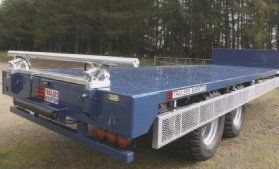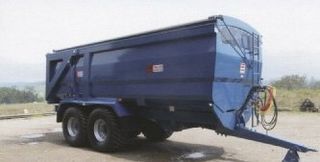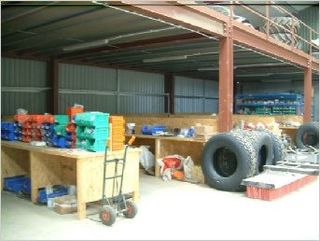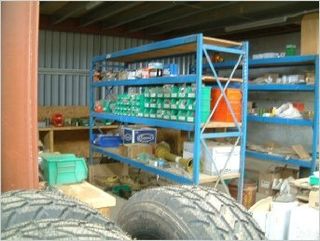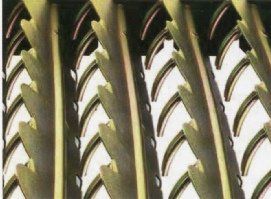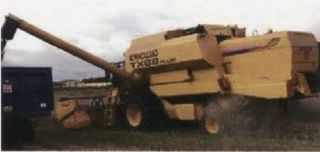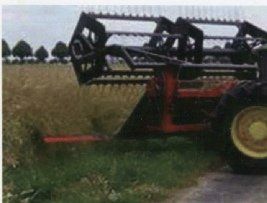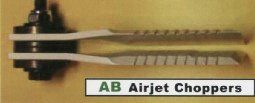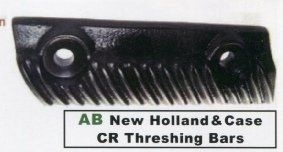We stock a large selection of spare parts to suit:
Marston trailers:
springs, pins, castle nuts, seals, bushes, brake shoes etc.
Dowdeswell / Standen:
Earth wearing parts of Dowdeswell, Standen, Howard and Grimmie bed tillers and rotovators
Gregoire Besson:
Plough metal etc.
Rabe:
power harrows
Spearhead:
Rotary cutter blades, Waltersheild and Bondoli gearboxes, PT guards etc.
E.C.E:
muck spreader and bunning H.D. cutters
Kuhn:
ploughs, power harrows, fertiliser spreaders
E.F. Weaving:
grain drills, cultivation equipment
Tyres:
premium quality tyres 80k rated complete wheels or tyres only including large flotations
Should you require parts to suit any of the above products please do not hesitate to contact us. Should you require an item for which we do not hold stock then we aim to have it delivered to us from the supplier within 2-3 days and wherever possible overnight.
Trailer parts – maintain breaking efficiency
Marston, Griffiths, Wootton, Fraser - large stock of replacement parts, including springs, pins, bushes and brake shoes etc.
Large stock of Dowdeswell/ Standen gearboxes and driveline parts
Combine upgrades
Brought up on a small farm in the Angus Glens, Scotland, I persuaded my father to buy a second hand combine harvester, not just to use on our own crop, but as combines were not all that common at that time I thought I could take on extra acres from some neighbouring farmers. The first combine was a Massey-Harris 726 with petrol/TVO Morris commercial engine, only 2.75 metre cut, cost £600.
In 1961 after a successful season, we purchased a Massey-Harris 780 diesel, 3 metre cut, cost £800, in order to keep up with increased demand which had taken our acreage to some 300.
In 1964 we looked to buy a new combine and we chose a Clayson M103 with 3 metre header, Ford 6 cylinder engine, cost £2,630. Combines were becoming more popular and the local dealer (James Mackintosh of Friockheim) sold 22 machines that year. It was when I was introduced to the service engineer, the late Peter Mann, that I gained what was to be a proper knowledge of how to take maximum output from a combine harvester. His opening words were “never use first gear, turn wind to maximum, open top screen full, bottom screen 75% open, drive combine into cop maximum capacity for 50 metres. Stop, make inspection of grain sample in tank, close bottom riddle a little if too much rubbish and keep a close watch thereafter”. It worked and proved to me that going slower didn’t mean a better sample.
We had the same success with John Deere combines and then in year 2000 we purchased a New Holland TX36, 6 shaker combine on the recommendation of the now retired New Holland Sales Manager (Martin Brown), who now resides at the next farm to us.
It has always been my belief that many combines are very much under-utilised and a further experience after meeting Stephen Wallace of Wallace Technology confirmed my theory. Stephen introduced me to the Agri-Broker power screen sieves during the Royal Highland show in Edinburgh, 2001. He was so emphatic that the sieves would allow the combine to achieve at least an increase in capacity of 15%, he offered me a full complement of sieves with payment at the end of the harvest! Needless to say, they achieved exactly that as in that season we started harvesting a 63 acre field at 3pm finishing at midnight, an average of 7 acres per hour in spring barley. We regularly can achieve, with a 6 metre header, forward travel of 6km/h I.e 22 tonnes of spring barley per hour. We used these sieves for nine seasons then changed them over to our current New Holland TX68+ combine and we continue to enjoy outputs far greater than similar machines.
To sum up, I would strongly advise that farmers and managers consider the benefits of all of the Agri-Broker products as a step to increased performance and overall cost savings. Combine manufacturers should do likewise, but of course if that were to be the case their sales would drop by 15%!
Norman F. Ogg May 2014

